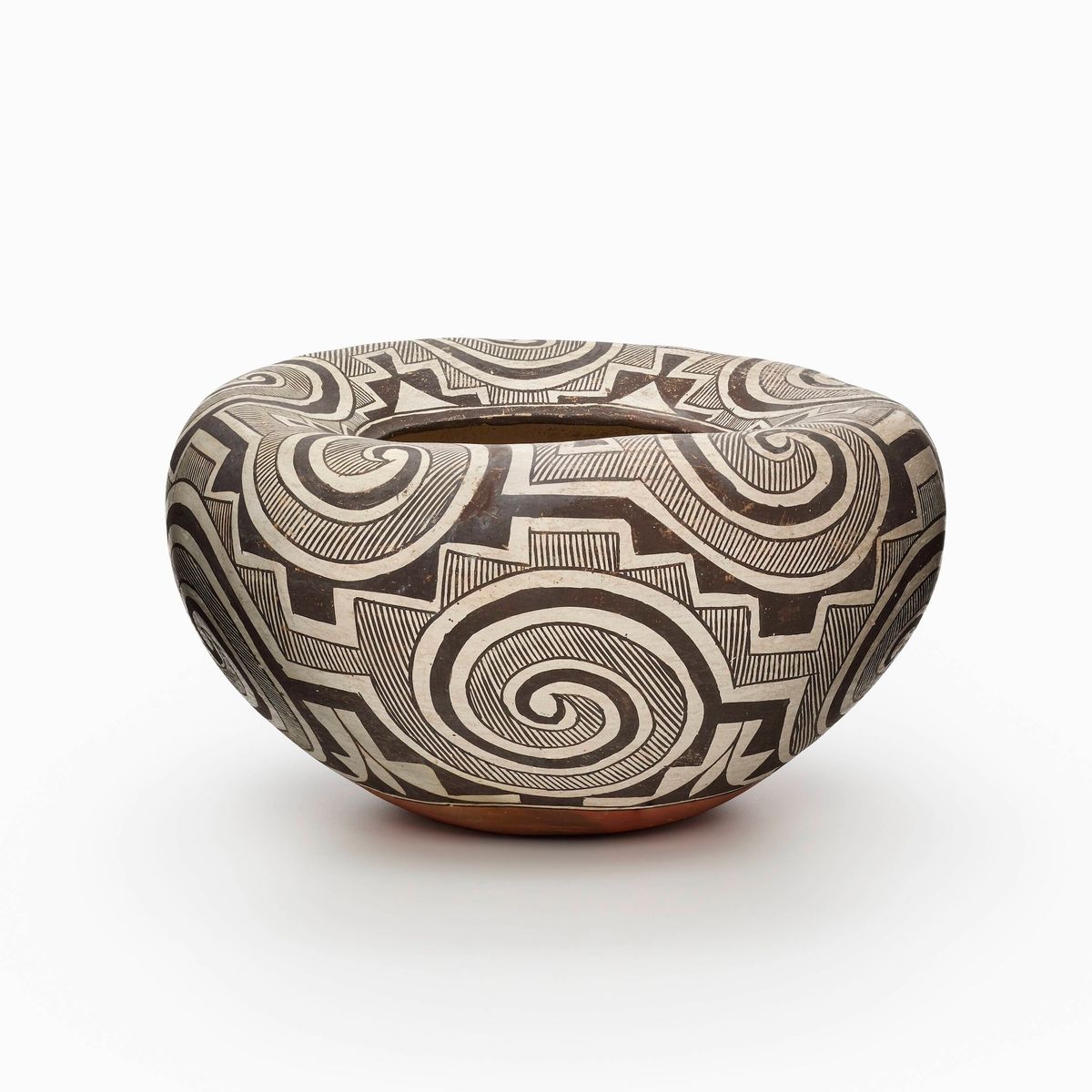The Museum of Fine Arts (MFA), Houston opens its first community-curated exhibition of Native American art and culture this month. Grounded in Clay: The Spirit of Pueblo Pottery (20 October-12 January 2025) was organised by the Pueblo Pottery Collective, which was formed for the express purpose of curating the show. It numbers more than 60 members from 22 tribal communities across the American southwest.
The diverse group includes artists, teachers, journalists, poets and others, each of whom selected and wrote about at least one object for the exhibition. The poet Max Early wrote in verse about his chosen Laguna/Acoma dough bowl, from around 1830-50. “I see you were a kitchen heirloom, lonesome for your home,” he wrote.
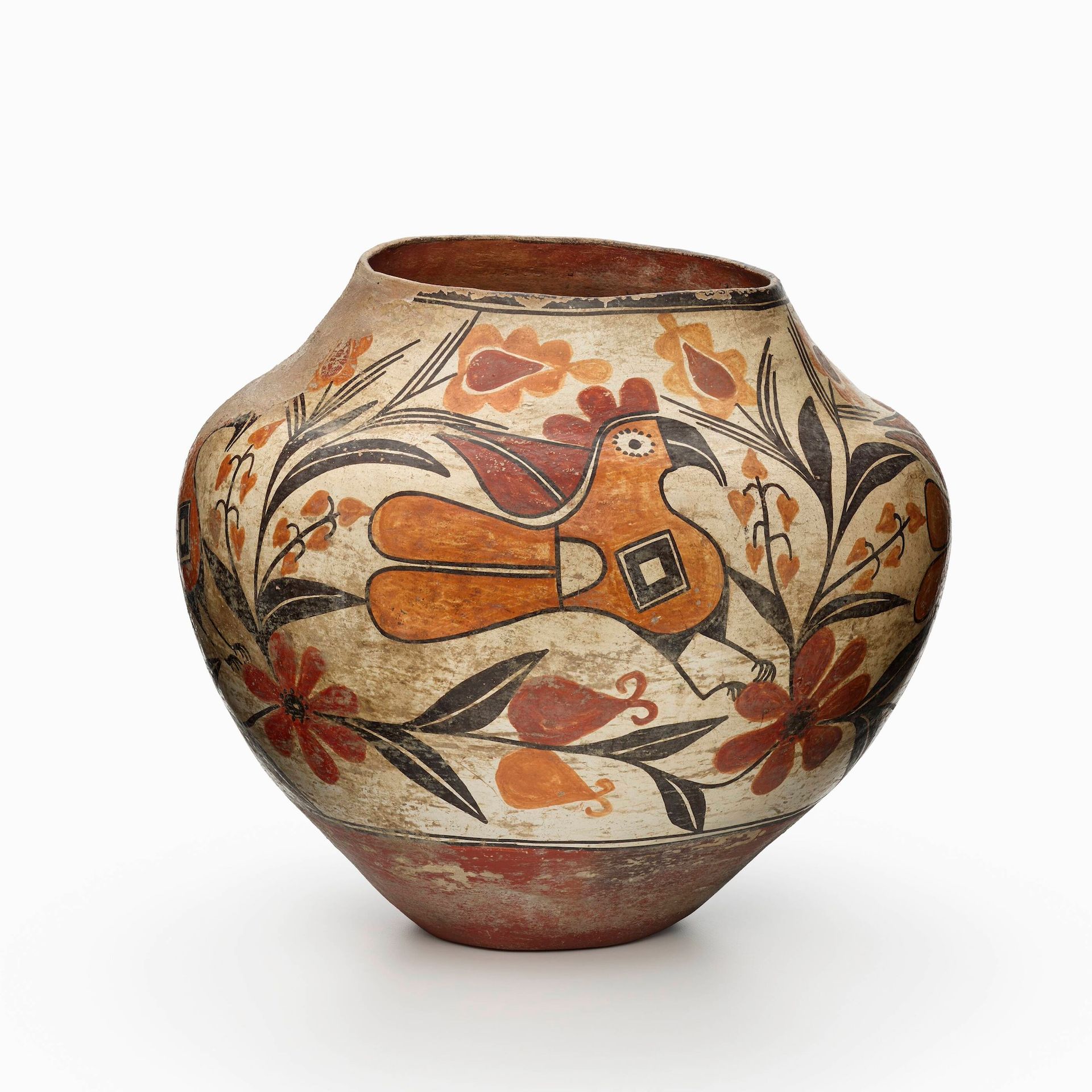
Pueblo (Acoma), Water Jar, around 1890-1910, clay, Indian Arts Research Center, Indian Arts Fund purchase for the permanent collection Photo © Peter Gabriel Studio
The writer and broadcaster Tara Gatewood, who lives in Isleta Pueblo, New Mexico, wrote about her “special connection” to one of the two vessels she chose. “Its creation dates to between 1880 and 1920, about 200 years after the Pueblo Revolt, during a time of great change in the world,” she wrote. “It could have been formed when my great grandmother Na-na Nar’beh’seh Pai’ee was a child and first encountered pottery. Years later, Na-na would create her own pottery amid her life of farming and raising a family.”
Patricia Marroquin Norby, the first full-time curator of Native American Art at the Metropolitan Museum of Art (where the exhibition opened in July 2023 after debuting at the Museum of Indian Arts and Culture, Santa Fe in 2022), is also in the collective. Marroquin Norby chose two Cochiti storage jars, dating from around 1800-20 and 1890-1900, and wrote that they were a “comforting presence” with their images of butterflies and seedlings painted with pigment made from ground and boiled bee plant.
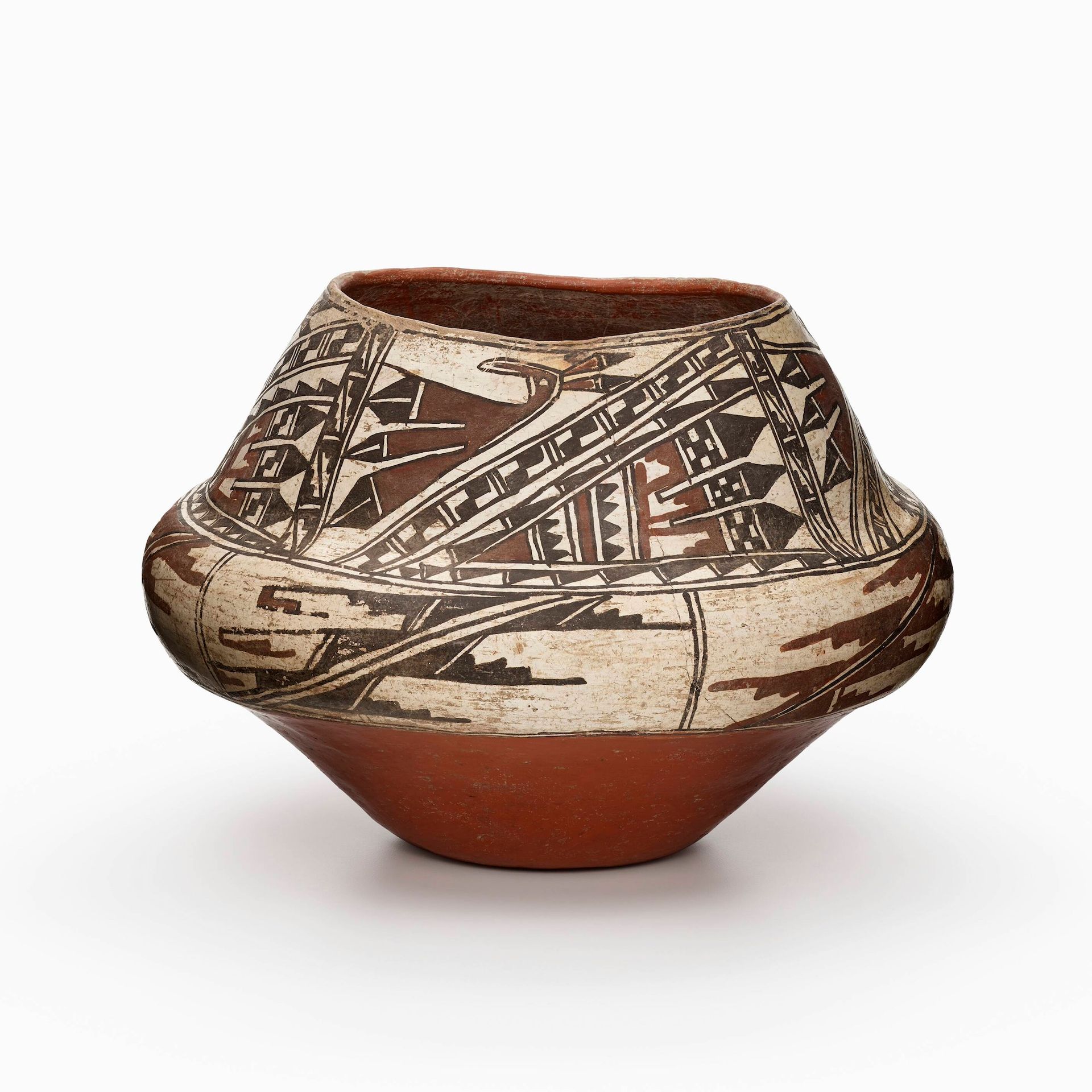
Pueblo (Zuni), Water Jar (K’yabokya de’ele), around 1720, Indian ArtsResearch, Center, gift of Janet Lewis Photo © Peter Gabriel Studio
“My own community, the Purépecha, also create hand-coiled pottery with images of water, celestial bodies, and animals,” Marroquin Norby wrote in the exhibition catalogue for Grounded in Clay.
The concept behind Grounded in Clay sprang from two organisations that hold significant collections of Pueblo pottery: the Indian Arts Research Centre of the School for Advanced Research in Santa Fe, New Mexico, and the Vilcek Foundation in New York. Once the collective was assembled, each curator was invited to select and research pots from the two institutions’ collections.
Grounded in Clay is a “groundbreaking” exhibition with the potential to create bridges between Native American groups and the wider museum field, says Chelsea Dacus, an assistant curator of Indigenous arts of Africa, the Pacific Islands, Australia and the Americas at the MFA Houston.
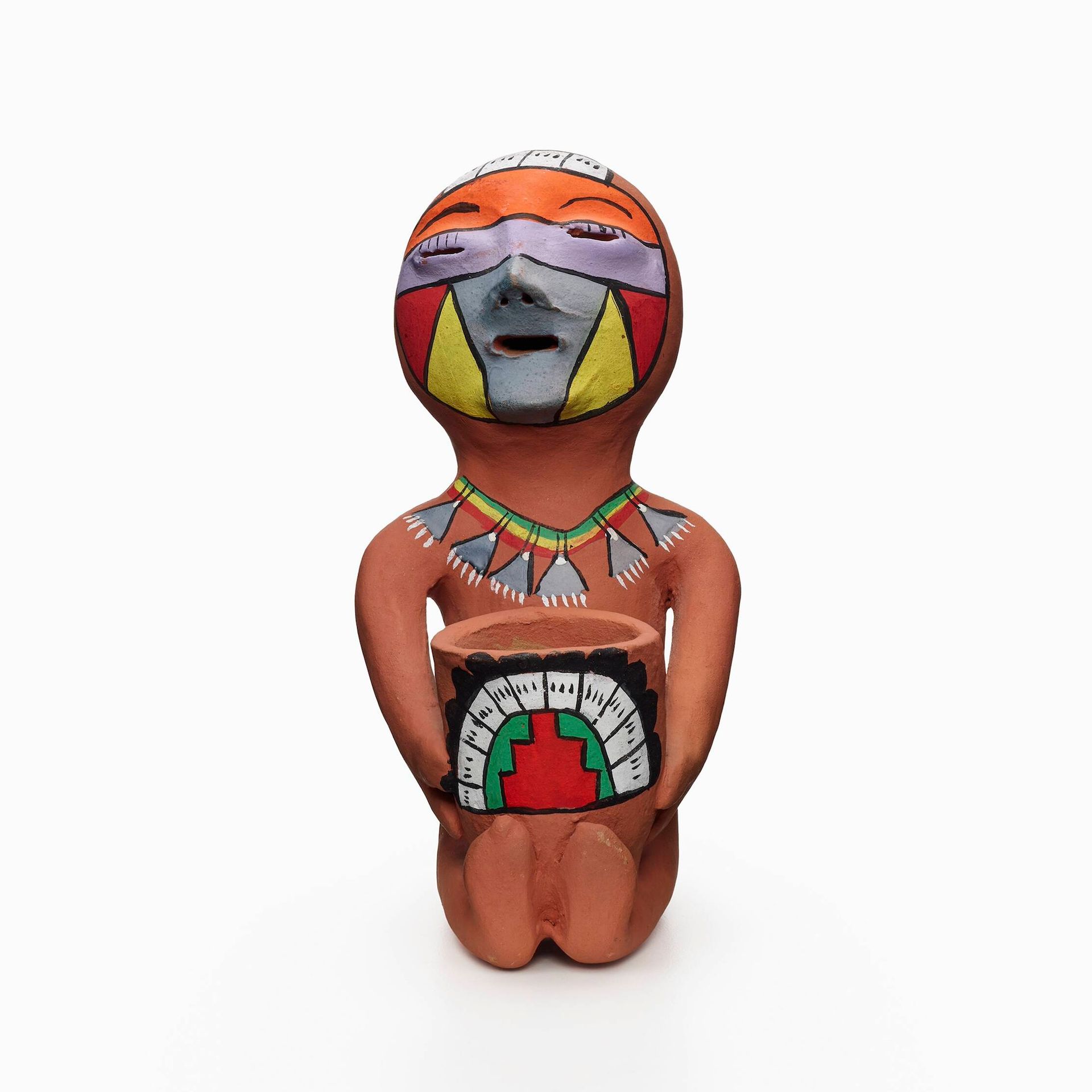
Pueblo (Tesuque), Figurine (Rain God), before 1900, Indian Arts Research Center, gift of unknown donor Photo © Peter Gabriel Studio
“A lot of Indigenous and Native people do not trust museums, for very good reasons,” Dacus tells The Art Newspaper. “They basically have not had a voice in a lot of the display (of their work) or how it’s spoken about. Building that trust and creating more exhibits like this is becoming more and more of an interest for many museums.”
The exhibition features beautiful utilitarian pottery of the kind that has been crafted for over 1,000 years in the Pueblo communities around the Southwestern United States. The works included in Grounded in Clay were made between the 11th century and the present day.
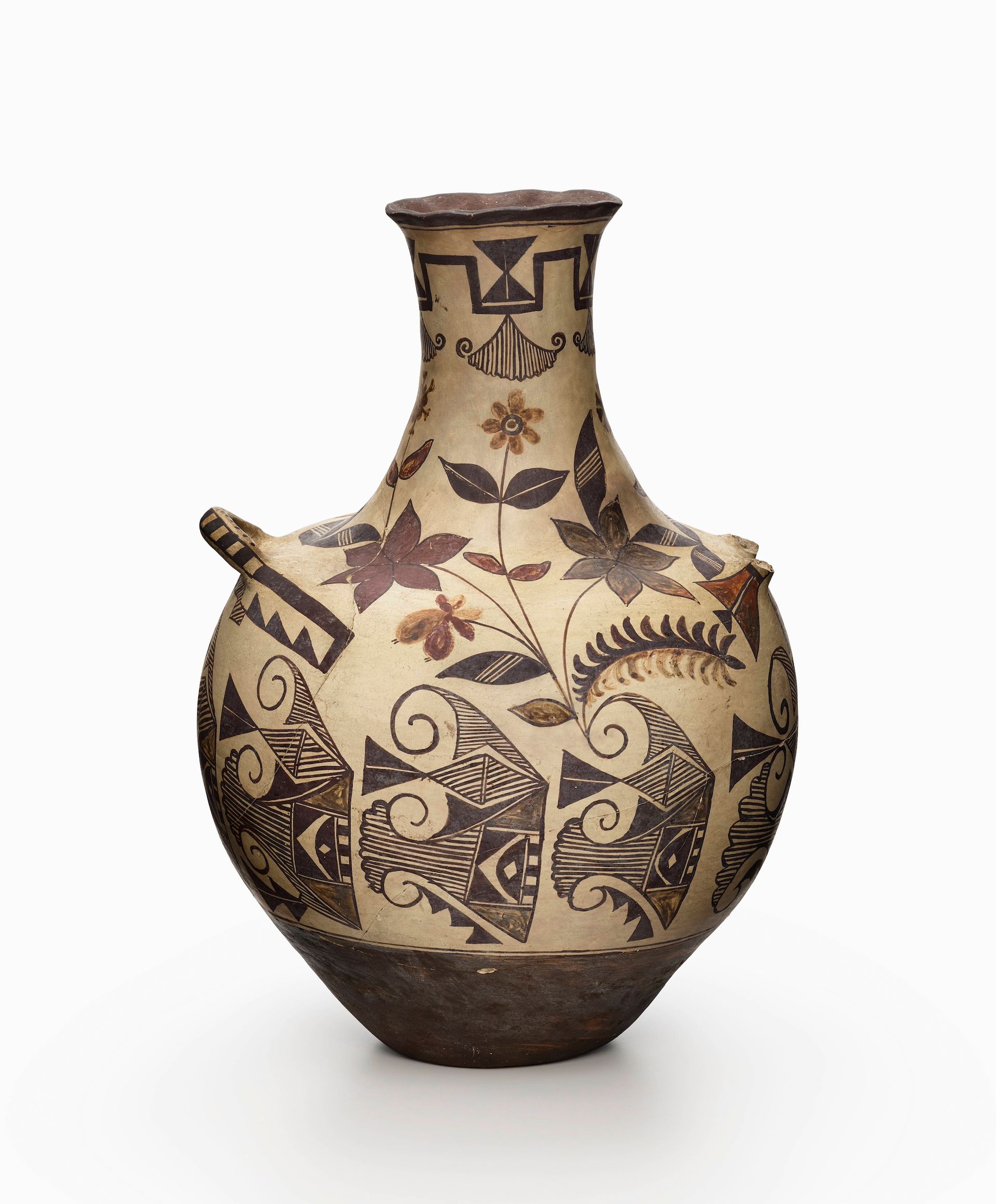
Pueblo (Acoma), Vase, around 1890-1900, Indian Arts Research Center, gift of Roberta Robey Photo © Peter Gabriel Studio
For Gatewood, the project was “something beautiful”. “It is one of the smartest moves to bring audiences together to a very authentic place, which is our experience as Indigenous people,” Gatewood adds. “Knowing who we are, having the roots that we do, knowing our history and then asking us to engage with our ancestors—that is something that is just remarkable, and it is profound on many levels.”
Dacus hopes the type of community curation that brought this exhibition together will be seen more widely across museums. “A lot of the curators are related to the potters that made the pots that they picked, and some are potters themselves,” she says. “It’s a new way of doing things, and people are still trying to find a way and make it into something that can be more comprehensible to someone outside of the community,” she said.
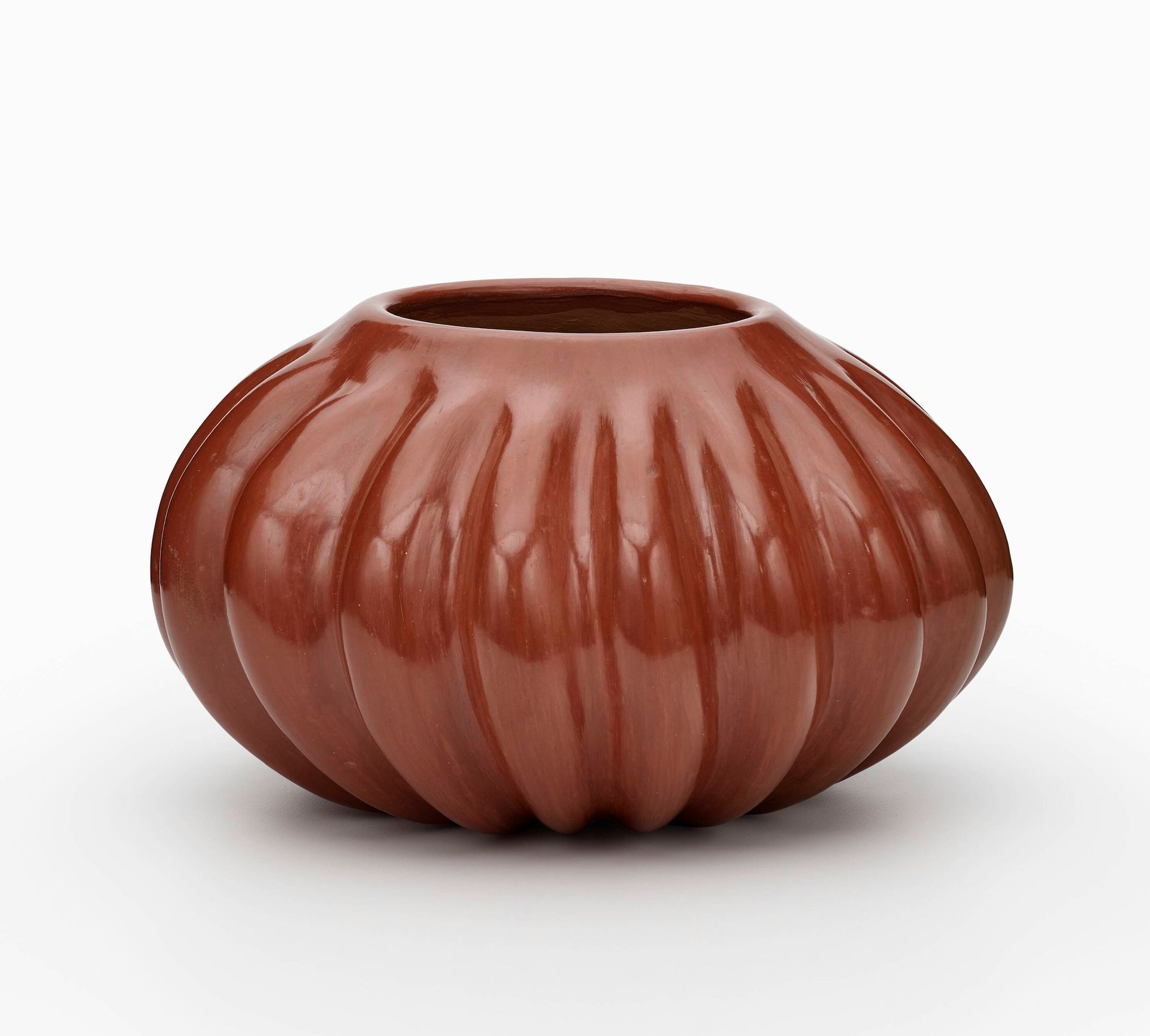
Helen Naranjo Shupla, Pueblo (Santa Clara), Bowl, before 1985, Indian Arts Research Center, gift of Marjorie Lambert Photo © Peter Gabriel Studio
When community members are consulted, greater understanding of objects can be achieved. One of the co-curators, Erin Monique Grant of the Colorado River Indian Tribes, selected an Acoma jar dating from the early 1900s that was described as bearing a fish design. She quickly discovered the design actually depicted the mythological thunderbird.
Grant wrote in the catalogue: “Pueblo voices should always be prioritised when one talks about, interprets and exhibits Pueblo pottery.”
- Grounded in Clay: The Spirit of Pueblo Pottery, 20 October-12 January 2025, Museum of Fine Arts, Houston. Saint Louis Art Museum, 9 March-14 September 2025


